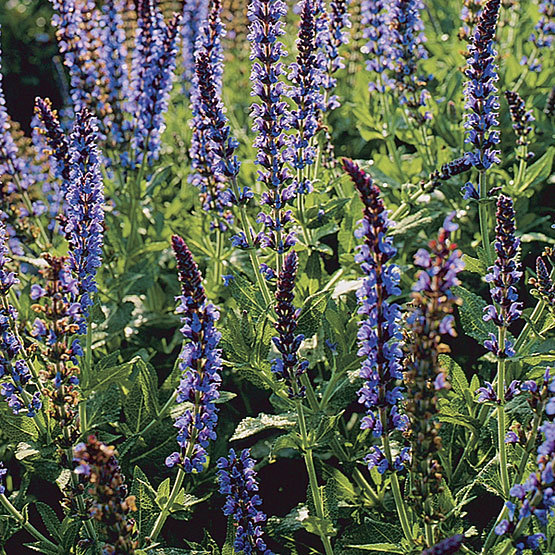
This genus is wildly prolific and widely dispersed, and its members are usually at home in sunny sites, such as dry meadows, rocky slopes, moist grasslands, and open woodlands. They often have aromatic or wooly leaves, which occur oppositely on square stems. The flowers are made up of two lips: the upper one forms a hood over whiskery stamens and the lower lip, which itself is wide and toothed. The flowers are borne along spikes and come in a breathtaking range of colors.
Noteworthy CharacteristicsThese are some of the showiest plants for containers, annual borders, and mixed borders. Butterflies and hummingbirds love sage almost as much as do color-hungry gardeners.
CareOutdoors: grow in moist but well-drained soil in full sun to partial shade; wooly-leaved species need sharp drainage and full sun. Indoors: grow in full light with shade from the heat of day; water sparingly in winter except S. canariensis, S. elegans, and S. leucantha.
PropagationSow seed of annuals in mid-spring or in situ, biennials in summer or in situ, and perennials in spring. Divide in spring.
ProblemsPowdery mildew, rust, stem rot, fungal leaf spots, whiteflies, aphids, mealybugs, spider mites































